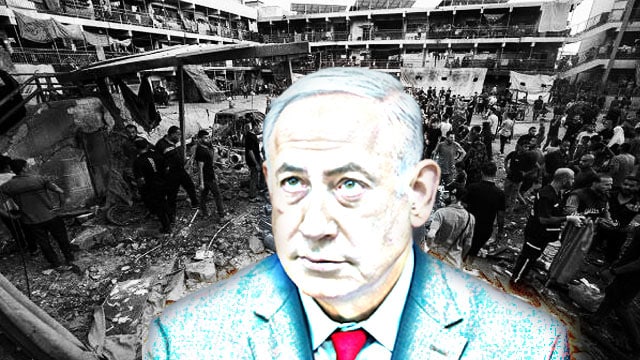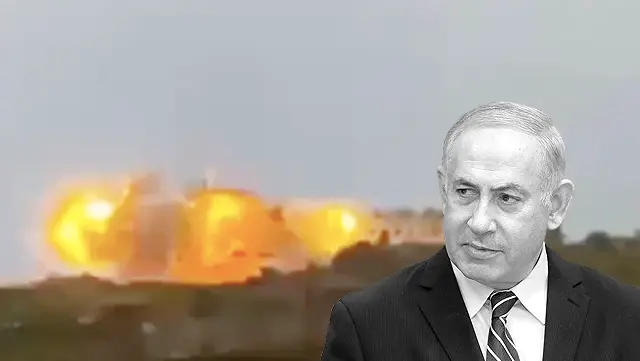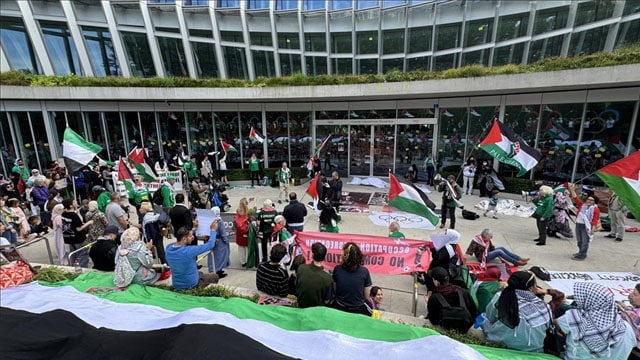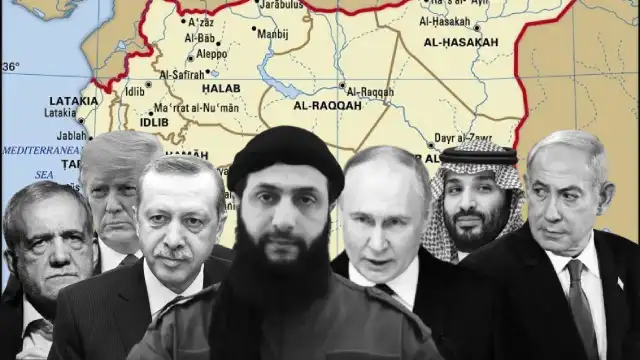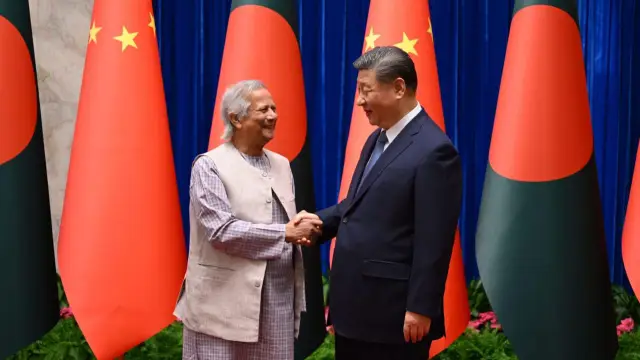Israeli forces have killed 1,391 Palestinians until April 7th, since breaking the Qatar-brokered Gaza ceasefire on March 18th 2025, the Palestinian Ministry of Health has reported. Meanwhile, Hamas has engaged in intense diplomatic efforts to secure a new Gaza ceasefire agreement, even as Israel conducts major ground operations in at least four areas across the devastated strip.
As negotiations stumble, a joint press conference between Israeli Prime Minister Benjamin Netanyahu, who is visiting the US, and American President Donald Trump scheduled for April 7th in Washington has been abruptly cancelled, raising questions about the status of their talks on Gaza’s future and fighting Iran, Yemen and the regional resistance that pose challenge to their collective hegemony.
Egypt proposes compromise Gaza ceasefire plan
Egypt presented a new compromise proposal on April 5th, attempting to bridge the gap between Hamas’s accepted terms and Israel’s counterproposal that preceded its renewed assault on Gaza.
The new Egyptian Gaza ceasefire plan calls for:
- A 70-day truce (longer than previous proposals)
- Release of nine living Israeli prisoners, including an American soldier
- Return of three bodies of Israeli prisoners
- Release of 300 Palestinian hostages (half with life sentences)
- Release of 2,220 Gazan hostages (held captive since October 2023)
- Opening of crossings and humanitarian corridors
- Negotiations on transitioning to Phase 2 (permanent ceasefire)
Hamas has indicated it will send a delegation to Egypt to discuss this proposal. The talks will also address reconciliation with the Palestine Liberation Organization’s (PLO) Fatah faction, which controls the Palestinian Authority in the West Bank.
The Hamas-Israel negotiation breakdown
The current impasse stems from Israel’s rejection of the terms Hamas had accepted in late March. The Egyptian-Qatari proposal that Hamas agreed to on March 29th included:
- A 50-day ceasefire
- Release of five living Israeli prisoners
- Freedom for 250 Palestinian hostages with life sentences
- Release of 2,000 Gazans held by Israel
- Israeli withdrawal from areas occupied since March 19th
- Opening of crossings and freedom of movement
- Conclusion of permanent ceasefire negotiations during the truce
Israel rejected these terms and countered with what became known as the “Witkoff Proposal”, demanding:
- Release of 11 living prisoners (including one Israeli-American soldier “for free”)
- Return of 16 prisoners’ bodies
- A shorter 40-day ceasefire
- Release of fewer Palestinian hostages (120 with life sentences)
- Return of 160 Palestinian bodies
- Freedom for 1,111 Gazan hostages
- Hamas disarmament
- Continued Israeli military presence in Gaza
- Exile of Hamas leadership
Most critically, Israel insisted that permanent ceasefire negotiations would only begin after the temporary truce ended—contingent upon Hamas’s disarmament and continued Israeli military presence. Hamas found these terms “completely unacceptable”.
Hamas warns prisoners at risk from Israeli bombing
As the Hamas-Israel standoff continues, Abu Obeida, Hamas’s military spokesman, issued a stark warning on April 4th: approximately half of the remaining living Israeli prisoners from October 7th 2023 are being imprisoned in areas that the Israeli military has ordered evacuated.
Al-Qassam Brigades stated they would not transfer these prisoners from these areas, placing responsibility for their safety directly on Mr Netanyahu’s government as the bombing intensifies. Of the original 251 prisoners taken on October 7th 2023, only about 24 of the remaining 59 are believed to still be alive.
Egypt’s urgent intervention after Israel broke the ceasefire
Egypt’s diplomatic efforts began immediately after Israel violated the January ceasefire. On March 19th, Egypt put forward an “urgent” proposal following what they called “the Zionist entity’s shameless violation”, which resulted in over 424 Gazan casualties in a single day.
That initial proposal included:
- Reopening the Rafah crossing for evacuation of wounded
- Aid entry in exchange for wounded Israeli prisoners
- Egyptian-Israeli coordination to ensure the safety of workers
Egyptian mediators expressed frustration, claiming they were “misled by Benjamin Netanyahu, who engaged in deception” by sending negotiation teams to Cairo and Doha despite already planning to resume attacks.
Hamas-Fatah reconciliation talks parallel to ceasefire negotiations
A surprising development has emerged alongside the ceasefire talks. On April 5th, a PLO Fatah delegation, including Jibril Rajoub and former prime minister Mohammed Shtayyeh, made an unscheduled visit to Egypt, where they discussed Palestinian unity.
Mr Rajoub revealed that Fatah presented a comprehensive reconciliation plan with Hamas, including:
- Close reconciliation between the factions
- Adopting a popular resistance strategy
- Accepting the PLO framework
- Recognising 1967 borders
- Unifying Gaza and West Bank governance
The Hamas delegation travelling to Egypt is expected to discuss both the ceasefire proposal and this reconciliation plan.
Further indicating movement on the internal Palestinian front, Hamas has already submitted a list of 13 non-partisan individuals to form a Community Support Committee for Gaza’s administration. This committee was previously agreed upon during Hamas-Fatah meetings and would report to the government in Ramallah.
The humanitarian catastrophe driving the urgency for a Gaza ceasefire
The negotiations take place against a backdrop of unprecedented humanitarian disaster. Israel has killed over 50,700 Palestinians since October 2023, with the toll rising daily. More than 65% of Gaza’s population has been forcibly displaced—many multiple times.
Israeli forces have established a new “Morag Corridor” dividing Rafah from Khan Younis and reasserted control of the “Netzarim” area, effectively splitting Gaza into isolated segments.
As French President Emmanuel Macron meets with Egyptian President El-Sisi and Jordan’s King Abdullah, he has expressed opposition to the displacement of Gazans and support for Palestinian Authority leadership in Gaza—positions that contrast with Mr Netanyahu’s apparent goals.
Trump-Netanyahu relationship under strain
The cancellation of the April 7th joint press conference between Mr Netanyahu and President Trump signals potential troubles within the US system as the tariff war’s repercussions made the stock markets worldwide bleed on Monday. Mr Netanyahu had announced they would discuss tariffs and “Iranian and Turkish threats” to Israel, but the meeting occurs amid growing pressure on the Israeli prime minister.
Reports of Mr Trump’s interest in Gaza real estate development have raised eyebrows, particularly as Mr Netanyahu faces domestic challenges including the “Qatargate” scandal and escalating internal protests. It’s believed that the Israeli prime minister has been dangling the bait of Gaza’s real estate before Mr Trump to get his approval and support for its military expeditions in the strip that has been turned into a heap of rubble. Mr Trump wants to build hotels, golf courses and other premium Mediterranean-facing properties there.
Outlook for Gaza ceasefire prospects
With relentless bombing continuing and ground operations expanding in at least four areas, the prospects for a Gaza ceasefire remain uncertain. Hamas maintains it is “committed to implementing the stages of the ceasefire agreement” while accusing Mr Netanyahu of reneging on terms.
Egypt’s new proposal represents perhaps the most promising opportunity to halt the violence. However, Israel’s insistence on maintaining a military presence in Gaza and delaying permanent ceasefire talks remains a significant obstacle to the Hamas-Israel agreement.
As international pressure mounts and the humanitarian catastrophe deepens, the coming days will prove crucial in determining whether a Gaza ceasefire can be achieved before further devastation engulfs the Palestinian enclave.

